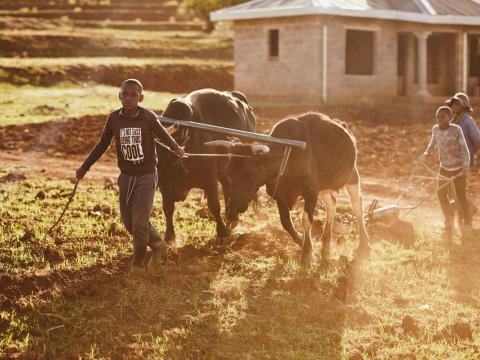Your 101 Guide to Child Labour

What is child labour?
When we talk about child labour, we don’t mean asking your kids to do the dishes. Child labour is defined by the International Labour Organisation as paid or unpaid work that children do which deprives them of their childhood, their dignity or their potential and is harmful to their development. One in 10 children around the world is engaged in some kind of child labour. If all children were able to finish high school, 420 million people could be lifted out of poverty. The stakes are high!
OK – but what’s the big deal about kids doing some work?
Of the estimated 160 million children between 5 and 17 around the world currently engaged in labour, a massive 79 million – over half – are engaged in hazardous work that directly endangers their health, safety, and development.
This is usually hard work that most adults would think twice about doing, and often in very poor conditions – it’s common for children to be exposed to harmful chemicals or toxins while working in farming or factories, physically strenuous tasks beyond their childhood strength or carrying heavy loads, using dangerous tools, exposure to extreme temperatures (most common in bakeries or laundries), or worse, like sex work. Because of their age and understanding, children involved in child labour are highly vulnerable to exploitation and abuse, especially regarding their rights and personal safety.

That’s terrible. But it has nothing to do with me.
Actually, it really does. Dozens of the world’s biggest brands have been tied up in scandals related to child labour – either through contracting to firms that exploit children or firms that source their components from companies that do. Every time you make a purchase, there’s a good chance that producing the item you just bought involves some kind of child labour.
Gosh. And what does a problem at that scale mean for kids long term?
Child labour isn’t just a problem for a child’s safety on the job – working as a child robs kids of their future potential, too. Whether they are employed for income or kept home from school to clean the house or stay in the fields so their parents can work, not getting an education can trap children in a cycle of lifelong poverty. In fact, if the unpaid domestic labour of young girls was considered, the number of children missing school to do work would increase exponentially. On the flip side, getting an education is a game changer, not just for individuals but their whole country. If by 2030 all school-age girls enrol in and complete secondary education, the gross domestic product (GDP) of developing countries will increase by 10% by 2040.
So school isn’t just about algebra then?
School isn’t just a place to learn; school is a place to be a child. Our school years are a fundamental part of our formative experience in terms of socialisation, maturing, developing and also just being carefree and safe amongst our peers. These opportunities help shape how you interact, behave, and achieve as an adult. At school, we learn boundaries, respect for others, how to make and keep friends, and so many other things other than arithmetic and history. The research is clear – the longer a child stays in education, the more money they will make in their lifetime, the healthier they will be, and the stronger and more stable their community will be.

But their families need the money they earn, right?
Right. Poverty forces families to send their children to work, but child labour also contributes to intergenerational poverty by keeping median incomes lower. Education costs money, but it is one of the best investments a family or a country can make in its economy. Countries, where children stay in education longer, have better economies that grow faster – and yet one in three children engaged in child labour is out of school because they are trying to meet the immediate needs of their families. It’s a tough cycle to break – but it is possible.
Tell me more.
Around the world, child sponsors are helping parents and carers to learn job skills, start businesses and save money, boosting their incomes and eliminating the need for children to work. In turn, that helps protect children from harm, exploitation and abuse and improves their chances of getting an education.
When you sponsor a child, you also help children, parents and communities to learn about children’s rights, making them less vulnerable to exploitation, and you help to advocate for national and municipal child labour laws to be enacted and enforced.
If you’re a child sponsor, you’re already making huge progress towards ending child labour. Right now, 2.1 million sponsors globally are partnering with children and their communities to break the cycle of poverty – and for every child sponsored, an average of four more children benefit. Thank you!